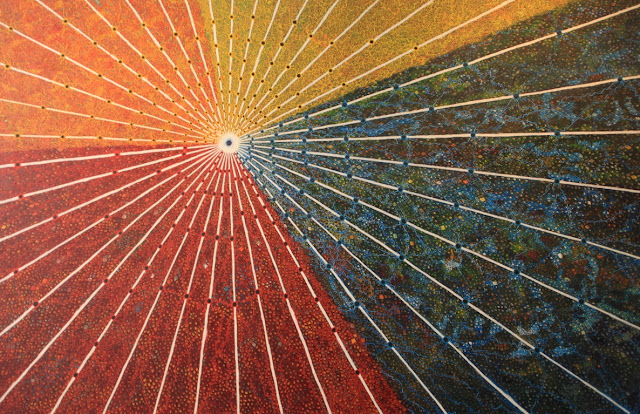I can already tel that there will be precious little time to write much on this trip. We are busy and dead dog tired at the end of the day so the photos will have very short captions. Still, a picture is worth a thousand words.
Take-off in Lima to the west towards the port city of Callao. This is the place where plundered gold and silver began its journey back to Spain.
Arriving in the Cusco Valley and looking down at the high mountains. The stratified hillsides are composed of sandstone and limestone, likely of Paleozoic age.
The ancient city of Cusco and its main plaza. Note the Cathedral to the left of the Plaza de Armas. The city felt large earthquakes in 1650 and 1950.
Close-up of the Cathedral entrance
Religious art with gold leaf coating inside a Cusco church
Our hotel is an old monastery that has been converted
Women with an alpaca for pictures on a narrow Cusco street
Many of the buildings in central Cusco are constructed using original Inca foundations. The rock work is incredible and when the two earthquakes occurred, those buildings with the Inca foundations fared well. The Inca knew that rock work that was pieced together made for a strong foundation.
The streets are paved with local rocks including, brown sandstone, black limestone, and green volcanic rock
The Cusco Valley is bordered by mountains and upon one of these is the ruined city of Sachsayhuaman (pronounced "sexy woman"). Up until quite recently, villagers from the city below would remove rocks from the walls of the ruins for use in homes and buildings in the valley. Only the largest rocks were not moved.
Some reconstructions are underway at the site and give a sense of what it might have looked like before the arrival of the Spaniards in 1532.
Intricate rock work
Terraced walls
The rock is limestone and is fitted together perfectly
The sheer size of the pieces is amazing
View of the plaza area
These striated rocks is where magma was extruded from beneath the surface at Sachsayhuaman. See an abstract by Arizona geologist Jon Spencer here.
The statue of Christ that overlooks the city
It ius summertime in the southern hemisphere!
A work of art at another ruin site. Tomorrow we take the train to Machu Picchu.




















Loved the Cusco photos. They brought back wonderful memories to me. The rock work is so mind boggling...how did they do that?
ReplyDeleteLove the Cusco photos, brought back wonderful memories to me. That rock work is mind boggling...how'd they do that?
ReplyDeleteHow did the limestone get up there? Limestone is sedimentary, is it by uplift of the south American tectonic plate above the Pacific plate subduction zone?
ReplyDeleteThat's right - uplift. However the plate off of South America is technically called the Nazca plate.
Delete